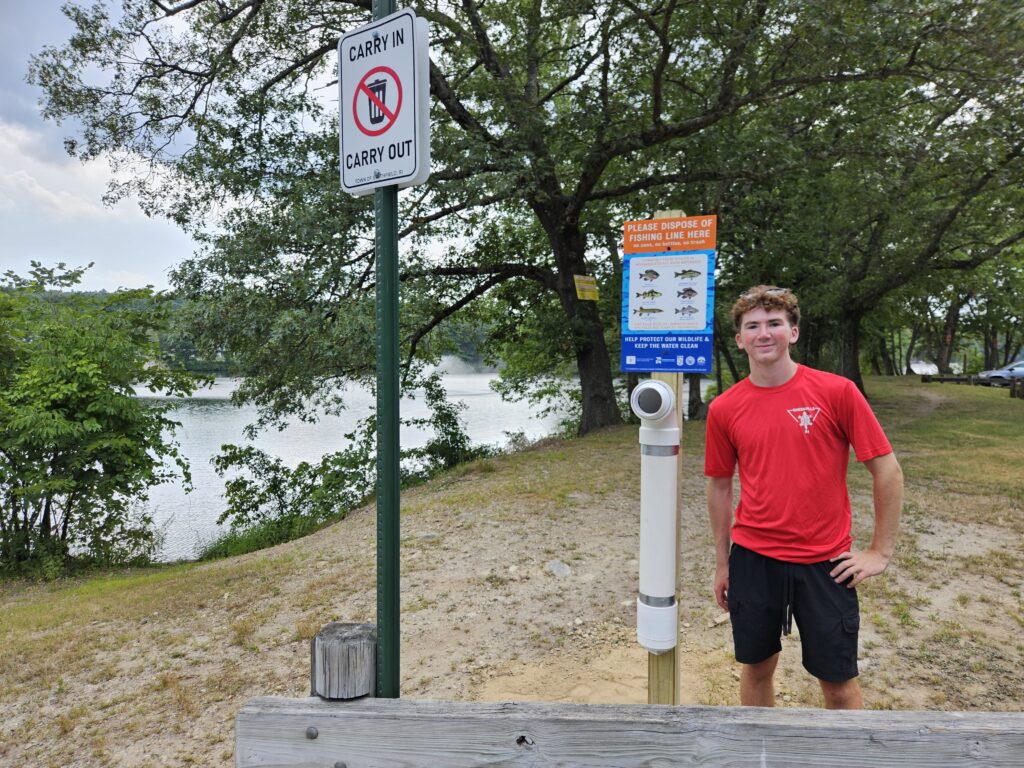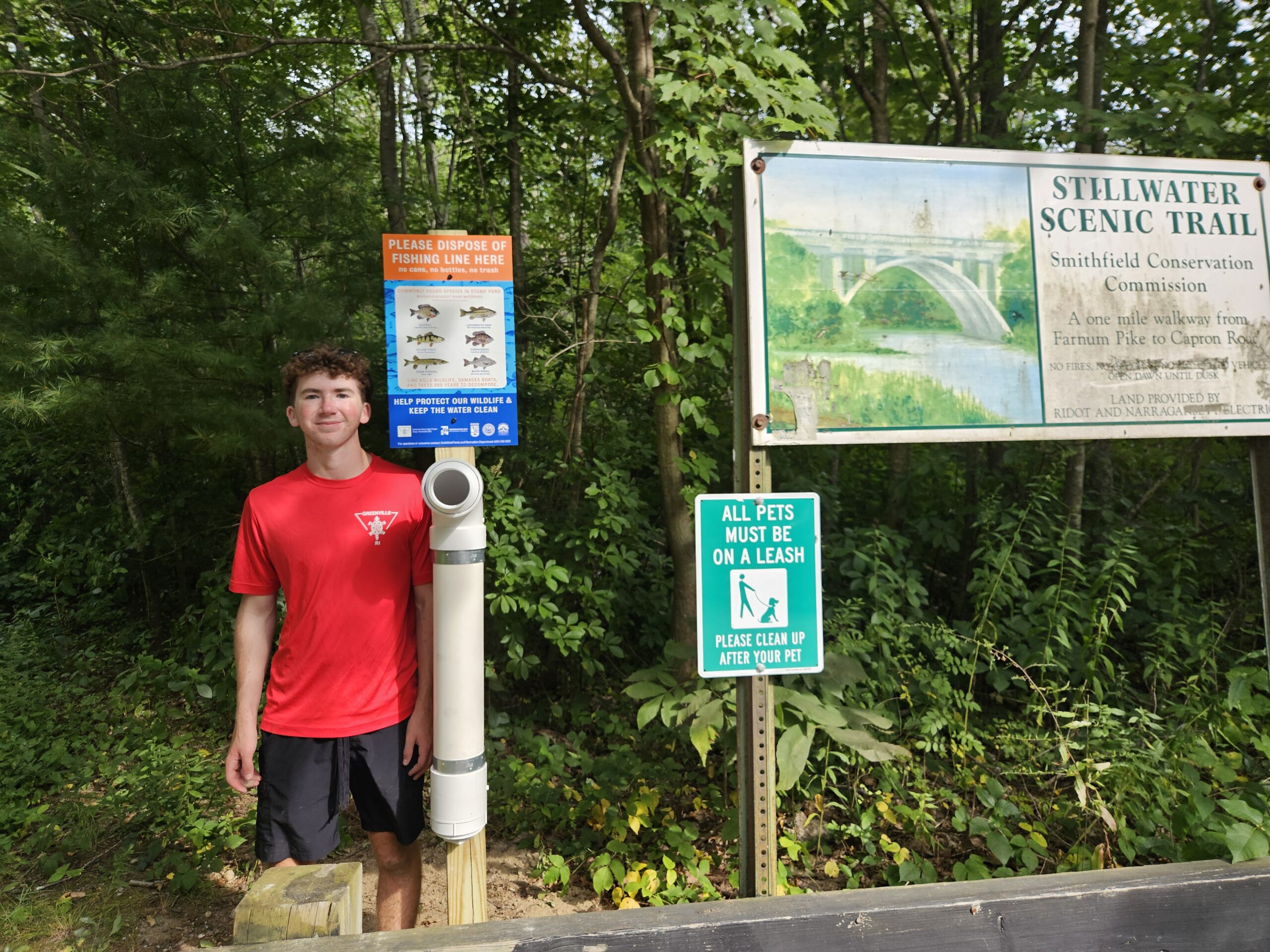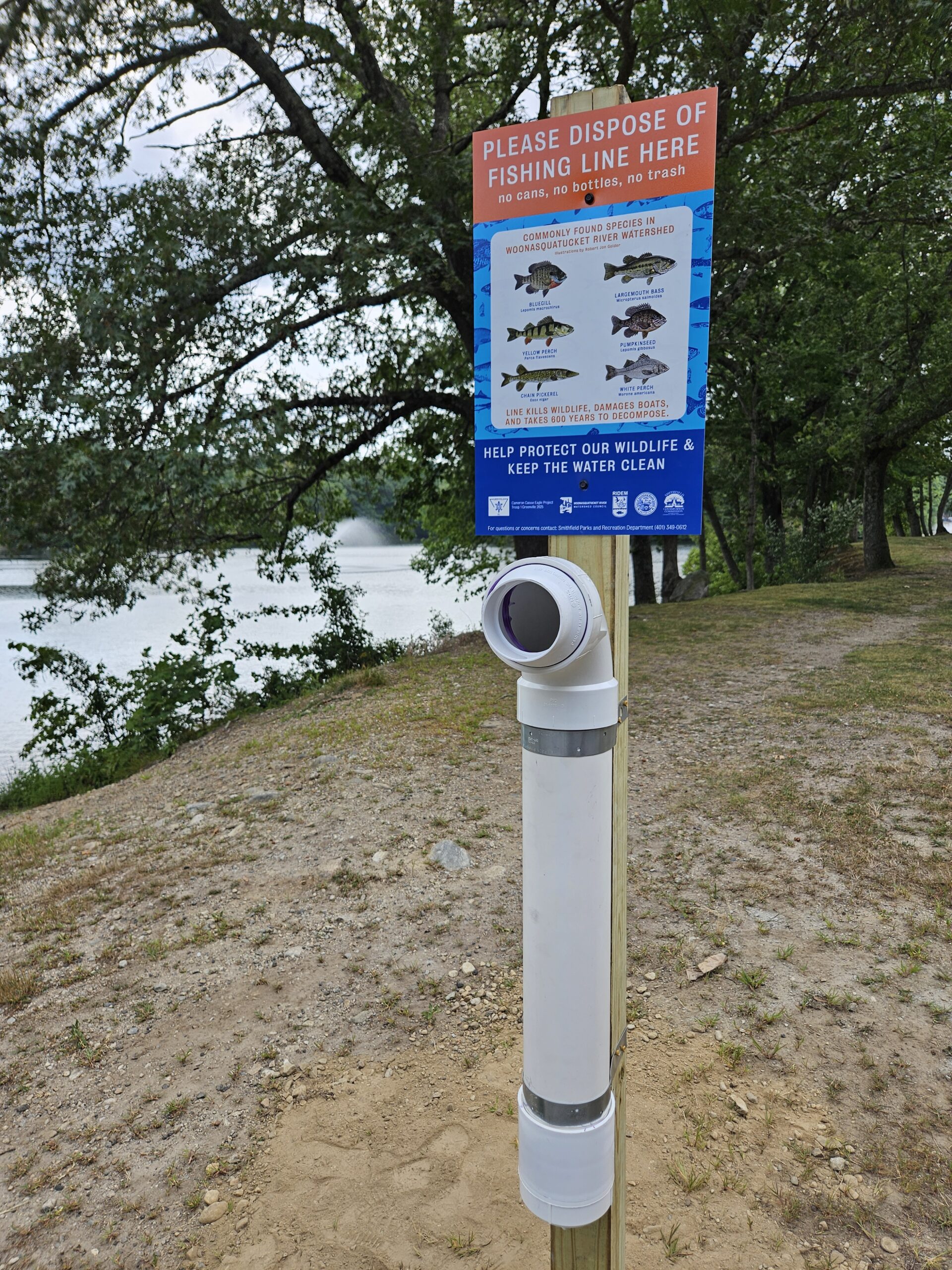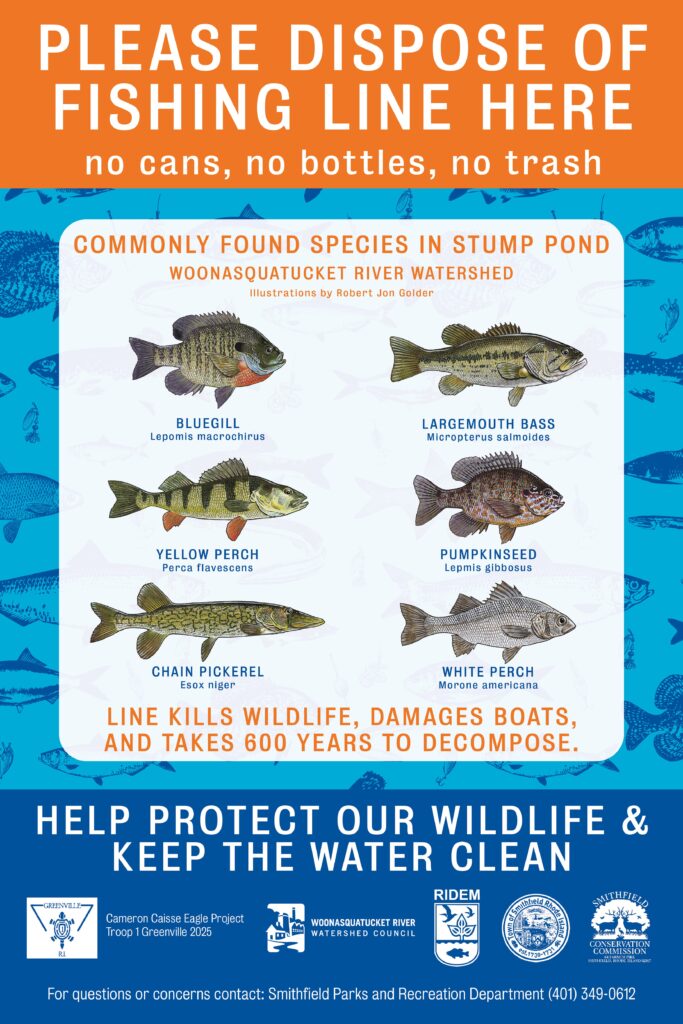
The Woonasquatucket River Watershed Council (WRWC) is excited to celebrate the work of Cameron Caisse, a junior at Smithfield High School and member of Troop 1 Greenville, who recently completed his Eagle Scout project with an important environmental focus: reducing fishing line pollution in Smithfield’s ponds.

Cameron designed, built, and installed fishing line disposal receptacles at popular fishing locations across town, helping to protect local wildlife, reduce pollution, and keep our waterways safe for all to enjoy. Fishing line, which is not biodegradable, often ends up in the water or along shorelines, where it can entangle birds, fish, and even damage boats.
“Fishing line is not biodegradable. It is often not properly disposed of, resulting in harm to wildlife and damage to boats,” Cameron explained.
To bring his idea to life, Cameron partnered with WRWC’s Lisa Aurecchia, who helped guide planning and placement of the receptacles. He also worked with community leaders including Elizabeth Leach, Chairperson of the Smithfield Conservation Commission; Robert Caine, Director of the Smithfield Recreation Department; and Christine Dudley, Deputy Chief of Freshwater Fisheries at RIDEM. Together, they supported Cameron in making this vision a reality.

To complement the receptacles, Cameron teamed up with designer Abby Taylor to create educational signage, ensuring that anglers understand the importance of proper disposal and the positive impact it has on the ecosystem.
Receptacle Locations
-
Stump Pond Dam
-
Stump Pond Boat Ramp
-
Leo Bouchard Conservation Center
-
Georgiaville Pond
-
Stillwater Scenic Trail
These new receptacles provide an easy, convenient way for anglers to help protect Smithfield’s ponds and wildlife.

“Whether it’s preserving the beauty of our parks or protecting wildlife, community service plays an important role in the Scouts,” Cameron said. “This project has been a rewarding way to make a lasting positive impact on my town.”
The WRWC applauds Cameron’s leadership, environmental stewardship, and commitment to community service. His Eagle Scout project not only serves as a model for youth-led conservation, but also as a lasting contribution to Smithfield’s natural spaces.
